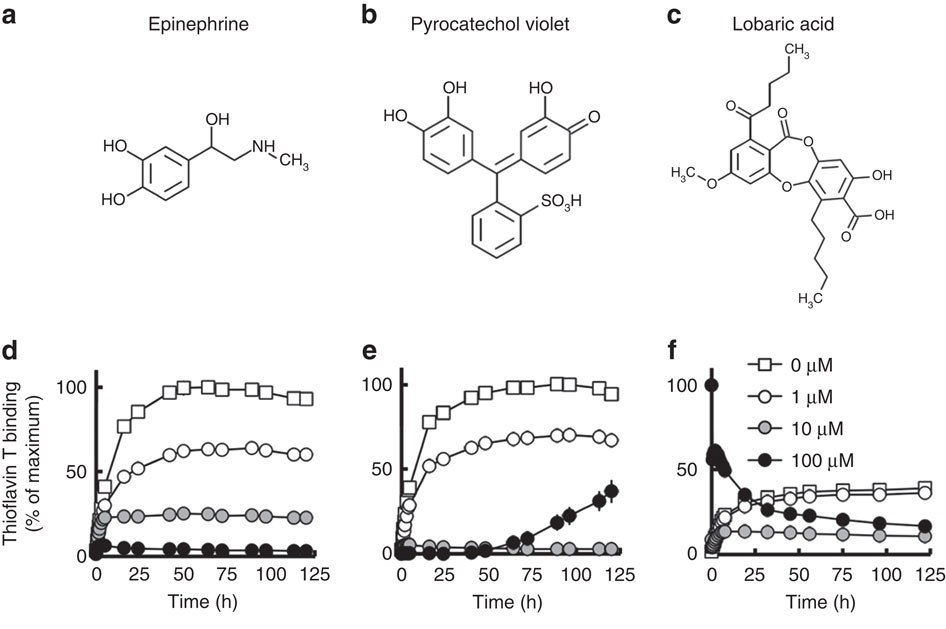1,2-ジヒドロキシベンゼン類はタウ蛋白のシステイン残基を修飾し毒性タウオリゴマー形成を阻害する
Toxic tau oligomer formation blocked by capping of cysteine residues with 1,2-dihydroxybenzene groups
2015年12月16日 Nature Communications 6 : 10216 doi: 10.1038/ncomms10216

神経原線維変化は過剰にリン酸化されたタウ線維で構成されており、アルツハイマー病の病理学的特徴である。神経原線維変化の蓄積は、臨床症状の進行度と強く相関している。タウオリゴマーの形成が神経原線維変化の出現に先行して起こり、神経細胞脱落に関わることを示す証拠が増えてきている。本研究では、化学骨格に1,2-ジヒドロキシベンゼンを含む化合物によって、タウオリゴマーの形成を阻害できることを示す。具体的には、1,2-ジヒドロキシベンゼンを含む化合物はタウのシステイン残基に結合し、タウ分子同士の相互作用を妨げることでその凝集を阻害する。また骨格に1,2-ジヒドロキシベンゼンを含み、脳に到達するアドレナリン受容体アゴニストであるDL-イソプロテレノールを経口投与したところ、界面活性剤不溶性タウと神経細胞脱落のレベルが低下し、神経原線維変化と関連した脳機能障害が改善された。したがって、タウのシステイン残基を標的とした化合物は、アルツハイマー病や他のタウオパチーの進行を止める上で有効である可能性が示唆される。
Yoshiyuki Soeda, Misato Yoshikawa, Osborne F. X. Almeida, Akio Sumioka, Sumihiro Maeda, Hiroyuki Osada, Yasumitsu Kondoh, Akiko Saito, Tomohiro Miyasaka, Tetsuya Kimura, Masaaki Suzuki, Hiroko Koyama, Yuji Yoshiike, Hachiro Sugimoto, Yasuo Ihara & Akihiko Takashima

